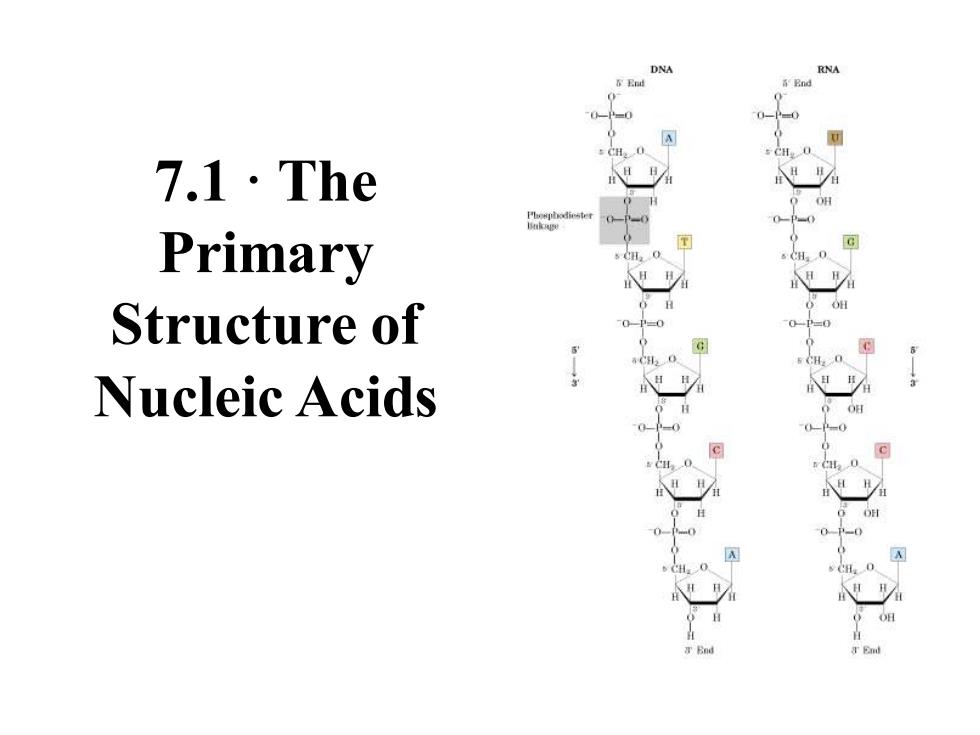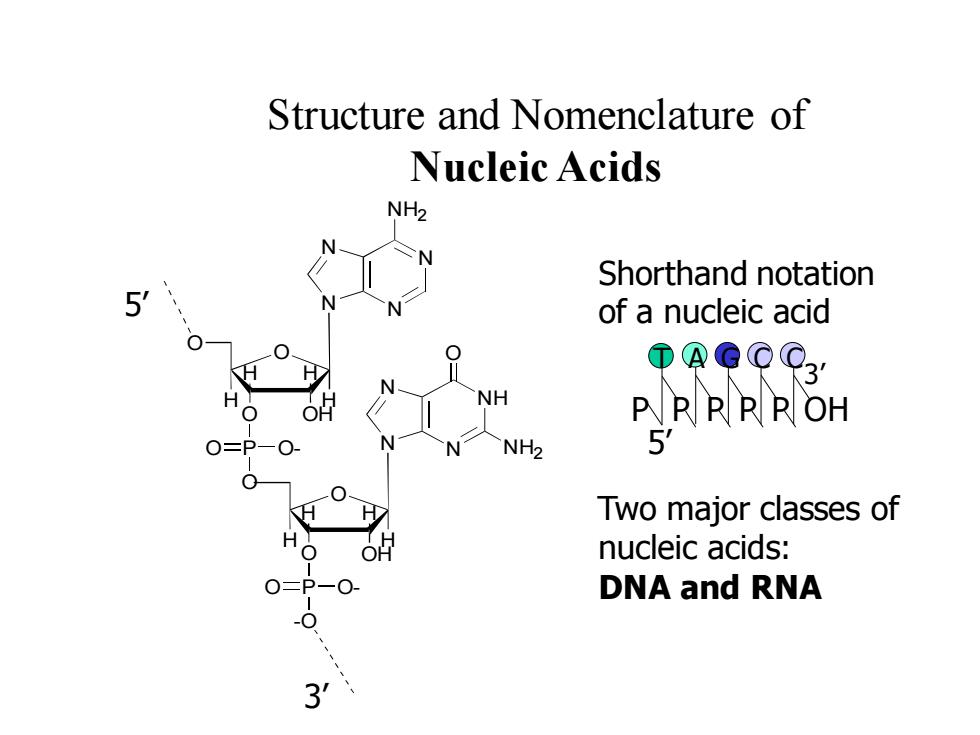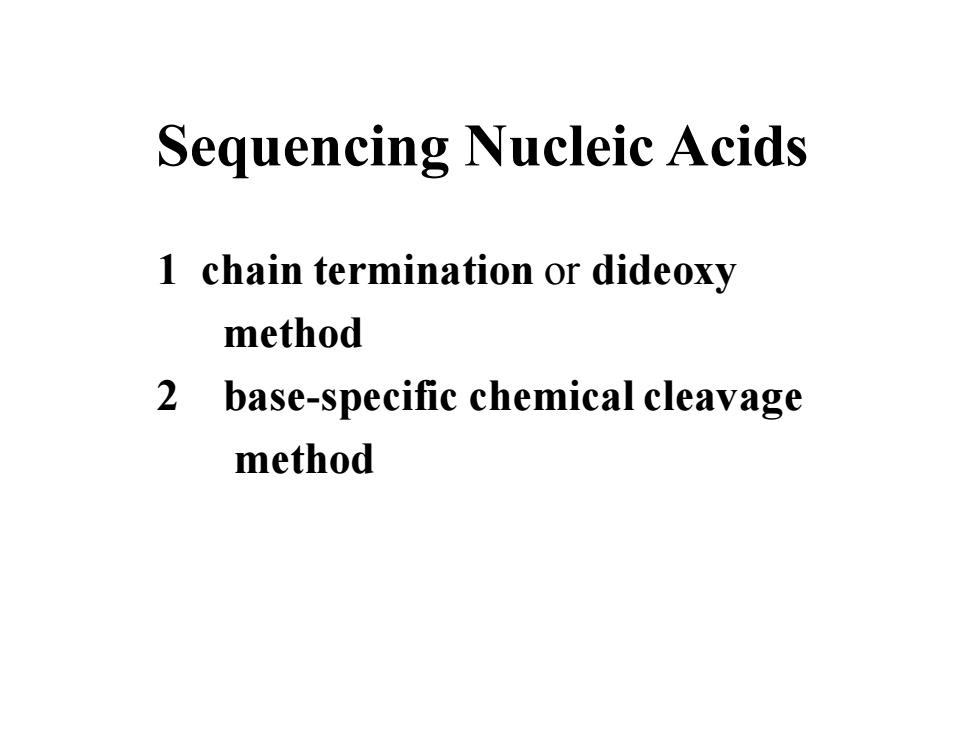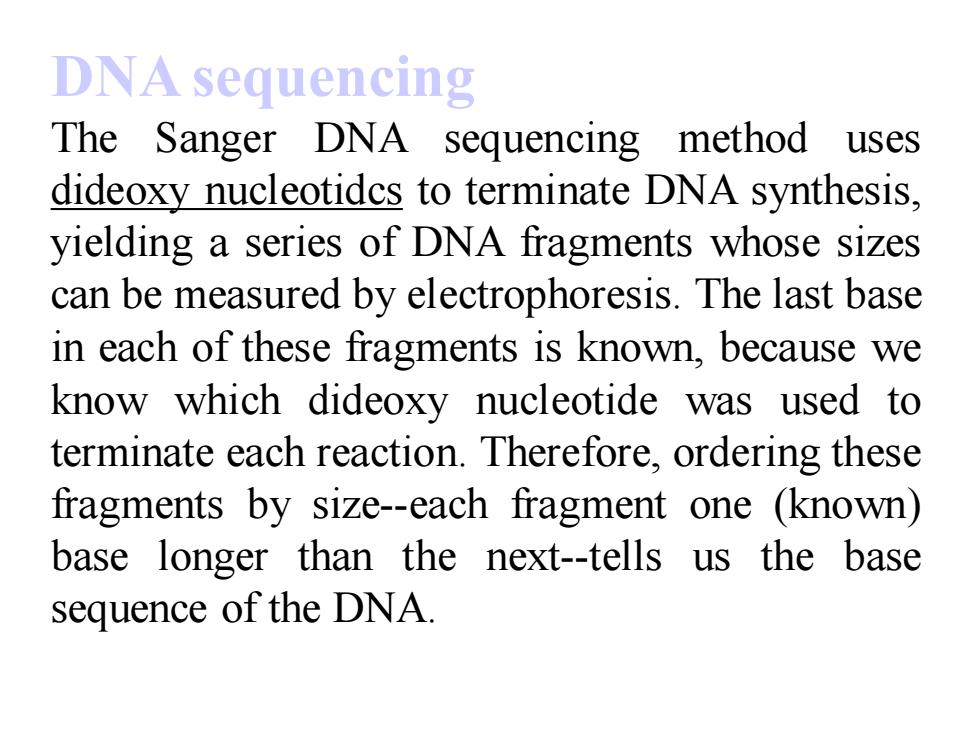
Chapter 7 Structure of Nucleic Acids 司形行感H之 "Scherzo in D E"(detail)by David E.Rodale 1955-1985)
Chapter 7 Structure of Nucleic Acids "Scherzo in D & E" (detail) by David E. Rodale (1955-1985)

RNA 7.1·The Primary Structure of Nucleic Acids
7.1 · The Primary Structure of Nucleic Acids

Structure and Nomenclature of Nucleic Acids NH2 N Shorthand notation N of a nucleic acid 0 ①aQCC3 NH RRROH NH2 5 Two major classes of nucleic acids: DNA and RNA
Structure and Nomenclature of Nucleic Acids N N N N NH2 O O OH H H H H O P O O O- NH N N O NH2 N O OH H H H H O O P -O O- 5’ 3’ P P T P A P G P C OH C 5’ 3’ Shorthand notation of a nucleic acid Two major classes of nucleic acids: DNA and RNA

Sequencing Nucleic Acids 1 chain termination or dideoxy method 2 base-specific chemical cleavage method
Sequencing Nucleic Acids 1 chain termination or dideoxy method 2 base-specific chemical cleavage method

DNA sequencing The Sanger DNA sequencing method uses dideoxy nucleotidcs to terminate DNA synthesis, yielding a series of DNA fragments whose sizes can be measured by electrophoresis.The last base in each of these fragments is known,because we know which dideoxy nucleotide was used to terminate each reaction.Therefore,ordering these fragments by size-each fragment one (known) base longer than the next-tells us the base sequence of the DNA
DNA sequencing The Sanger DNA sequencing method uses dideoxy nucleotidcs to terminate DNA synthesis, yielding a series of DNA fragments whose sizes can be measured by electrophoresis. The last base in each of these fragments is known, because we know which dideoxy nucleotide was used to terminate each reaction. Therefore, ordering these fragments by size-each fragment one (known) base longer than the next-tells us the base sequence of the DNA